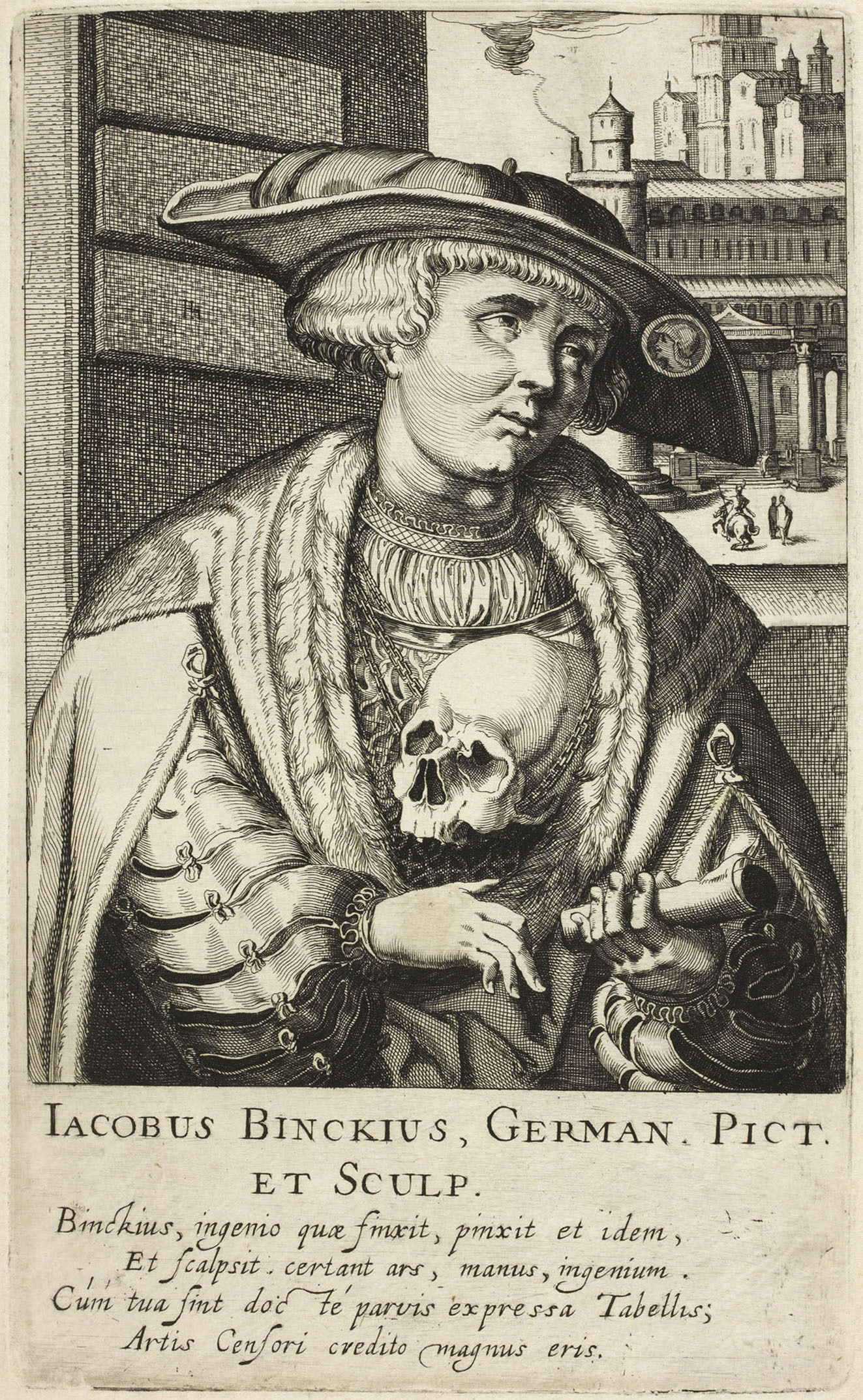Etching
Signed ‘Hh’ by Hendrick Hondius, attributed to Simon Frisius
20.2 x 12.2 cm
Transcription of Inscription:
IACOBUS BINCKIUS, GERMAN. PICT. ET SCULP.
Binckius, ingenio quae finxit, pinxit et idem,
Et scalpsit. certant ars, manus, ingenium.
Cúm tua sint docté parvis expressa tabellis ;
Artis Censori credito magnus eris.
Translation of Inscription:
Jacob Binck, German painter and sculptor
Binck painted and engraved himself what he imagined in his mind.1 His skill, hand and mind vie [with one another]. Since your [works] are learnedly expressed,2 you will be great, if the censor of skill is believed.3
Orenstein 1996, Frisius, no. 137; Hollstein 2008 no.157
Grove Art Online biography
Footnotes:
- “ingenio… finxit”. Cf. the texts on 67. Maarten van Heemskerk, “finxit qui ingenio”; 83. Christian van den Queborn, “fingit at ingenium”; 111. Cornelius Ketel, “finxerat ingenio”. The combination is common enough in classical Latin (Cicero, Seneca, etc.)
- Does the author here mean “engraved” by “expressa”? Compare note on text for 89. Joos van Winghe.
- I am here translating as if the author had written the ablative “censore” instead of the dative “censori”. For metrical reasons, we can be sure he wrote “censori”, but translating the dative would give the extremely awkward “you will be great for the censor of skill, if he is believed”. I have little doubt the author meant what I have written. – See also the note 5 on “pictorum censor” in Poem to the Lovers and Admirers of Pictures.


